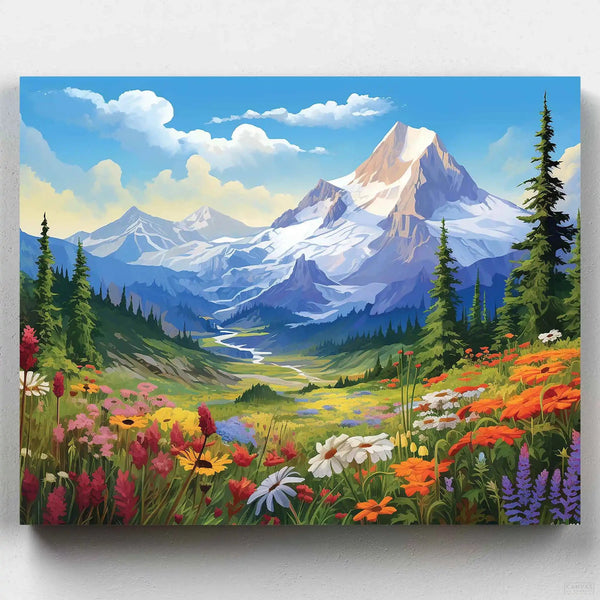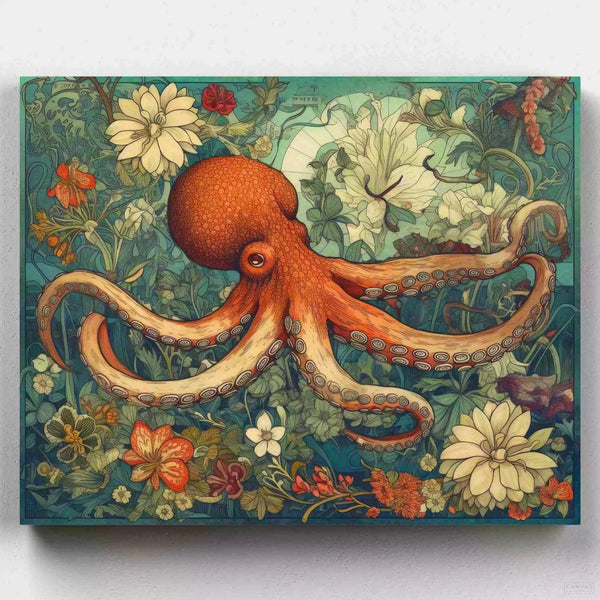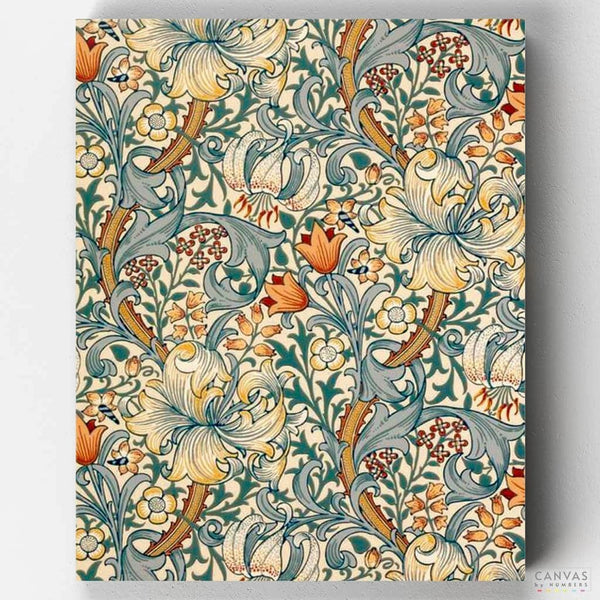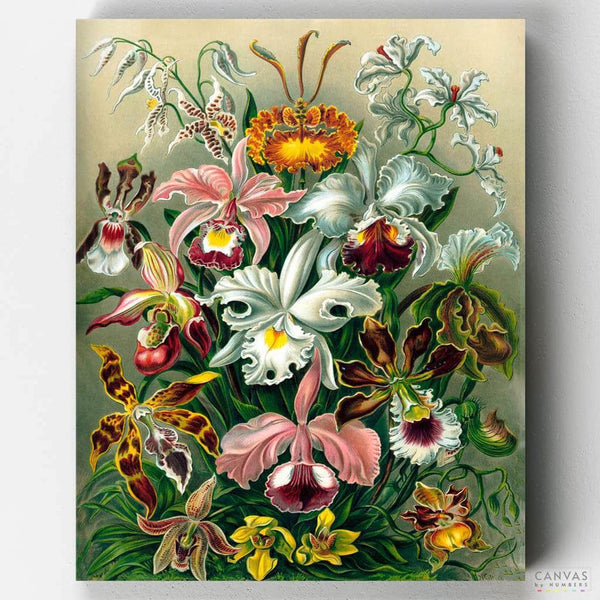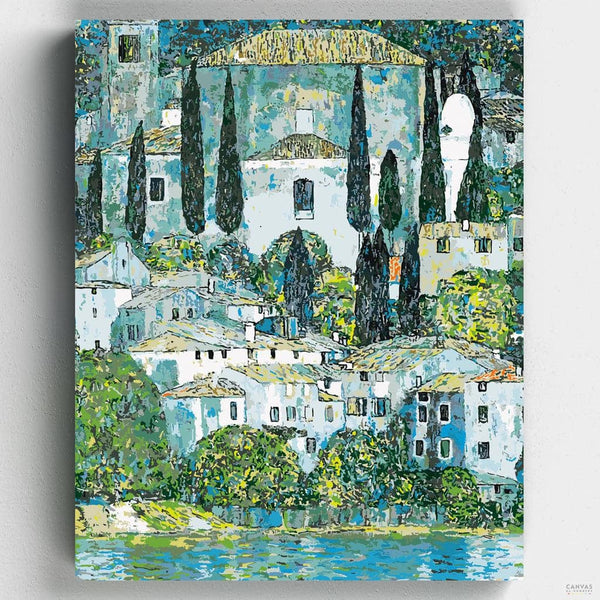From Canvas by Numbers, today we want to discuss a recurring theme in the activity known as paint by numbers, or more specifically, paint by numbers for adults. This theme is the difficulty.
Beyond the well-being and invaluable stress control that this activity provides, as we already know, we want to analyze the subjective perception that each of us has of the process and the achieved result. In other words, this picture that I've decided to paint using the paint by numbers technique: Is it easy or difficult? Has it met my expectations in terms of the work done and the time I've dedicated? Has it been too much for me, or, on the contrary, did I expect more complexity? Have I enjoyed the painting process?
Not a few customers write to us suggesting that we indicate the level of difficulty on each painting: easy, medium difficulty, difficult. Our software allows it, and there would be no major technical complication. However, the problem arises when we receive comments about the same painting in both directions: some find it difficult, and others find it too easy.
Let's break it down. It is very true that to create a fantastic paint by numbers picture, you don't need special skills or prior knowledge of painting, and it's not associated with an innate talent for it. Coloring a picture is something we've all done in childhood, though with markers or colored pencils, not with a brush. Also, it's logical that paint by numbers for adults will always be more complex than that for children.

But is it really complicated?
First, let's recall the general guidelines for tackling a paint by numbers canvas, starting with the understanding that our paint by numbers canvases include everything necessary to complete the work: canvas, brushes, and acrylic paints.
- You should start at the top of the canvas and work your way down; if you're right-handed, go from left to right, and vice versa if you use your left hand. The goal is to avoid unwanted smudges of paint that hasn't dried on the canvas.
- Begin with the smaller areas, followed by the medium-sized ones, and then the larger areas. If possible, try to paint with one color at a time and let each area dry completely before moving on to the neighboring sections. It's crucial to clean the brush when switching colors.
- If there are very small areas, it's better to dip the end of a toothpick into the desired paint color and "dot" the area on the canvas.
- As you paint, you'll discover the exact amount of paint to use: enough to cover the numbers but not so much that it spreads into neighboring areas.
- In some areas, you might need to touch up. This is normal for very light colors, and you only need to wait for the paint to dry between coats.
- If you have to mix certain colors, do so in small quantities to avoid wasting too much paint. You can darken the color by adding a small amount of a darker paint color in the same range.
- These mixes are very useful for blending the transition areas between colors to smooth the separation line.
- And, of course, place your canvas in a well-lit area where you can work comfortably. A magnifying glass can be a helpful accessory at times.
It doesn't seem complicated, right?
Once we have defined this technique, which is simple to apply as we have seen, we will focus on choosing the painting. At Canvas by Numbers, we have more than 300 images to choose from: landscapes, cities, flowers, portraits, seascapes, great masters of painting, young painters, and more. The paintings are categorized into Collections to help you make your choice.
With so much variety, how do you know which paint by numbers is right for you?
At times, a painting is chosen because we like the colors, the theme, or we admire the original artist, without carefully examining the amount of detail in the subject to be painted. While the images of the paintings we see in the store must be extrapolated to the actual size of 40cmx50cm, it can happen that upon receiving our paint by numbers canvas, we look at the canvas and realize that this fantastic picture has a pattern with many tiny areas that we didn't expect.
For some people, this is a challenge that adds interest to the project, but for others, it becomes work they feel incapable of doing.

(*) Esencia Azul by Megan Duncason
Excluding a few paintings that fall into the extremes, the majority of them are in a wide middle zone that would be hard to categorize with a simple "easy or difficult," because the difficulty a person encounters in painting is entirely subjective and depends a lot on patience and their expectations regarding the time and effort involved.
Some want to finish their project in two days, for example, and if they don't succeed, they get frustrated and begin to see their work as something pending and burdensome that they will never finish. There, both enjoyment and the benefits of paint by numbers come to an end. What a pity!
Conversely, there are other people who want to fully enjoy a particular project, and if they progress faster than expected, they find it too easy. Finding the balance is challenging!

(*) The Great Wave by Katsushika Hokusai
Given this scenario, at Canvas by Numbers, we decided to create a collection to guide beginners in this activity when choosing the right painting that will be rewarding. The keyword here is "guide" because we have already mentioned the high degree of subjectivity in both choosing the painting and the perception of the process and the final result.
The Beginners Collection is designed for those who are new to paint by numbers, allowing them to progress gradually and evaluate where they feel comfortable with the activity.

(*) The River by Natalia Zagorii
If it's your first time diving into this activity and you want to find out how motivating painting can be, in the Beginner Collection, you'll find many paintings to your liking with various themes, colors, and authors. It will allow you to practice the technique and get used to handling brushes, applying color to areas of different sizes, and it will also give you an idea of your level of demand. The basic idea we shouldn't forget is to enjoy paint by numbers while obtaining something tangible as a permanent reminder of our skills.
If you've already painted before and feel comfortable with your level of demand, choose another painting from the same collection or "jump" to the more than 260 paintings included in other Collections, as you already know the technique, are familiar with applying color to small and medium-sized areas, and are satisfied with the results. There is plenty to choose from. Remember the basic idea: enjoy.
On the other hand, if you're someone who likes challenges, choose a painting with more complexity, and you'll find the perfect challenge. A challenge with yourself. How do you choose among so many painting varieties? Select paintings with smaller, multicolored motifs that work on the details.
In the Famous Painters Collection, you'll find some famous paint by numbers paintings that suit this purpose. A boost of self-esteem! Don't be afraid to choose a painting with a lot of detail; both the final result and the time invested will be your reward. The greater the difficulty, the greater the satisfaction. Step out of your comfort zone and take a risk!
Finally, most of the paint by numbers paintings in our catalog fall into a broad intermediate level, where the vast majority of enthusiasts of this activity will find the right painting for them. In Canvas by Numbers, we encourage you to start this activity without fearing the possible difficulty. When we say it's for everyone, we're not exaggerating: anyone can create a wonderful work of art.
The paint by numbers paintings featured in this post belong to the Beginners Collection, and as you can see, they cover a wide range of themes. Start enjoying!
Looking for a new way to create a painting? Explore our Diamond Paintings collection and craft a true masterpiece without paint.









